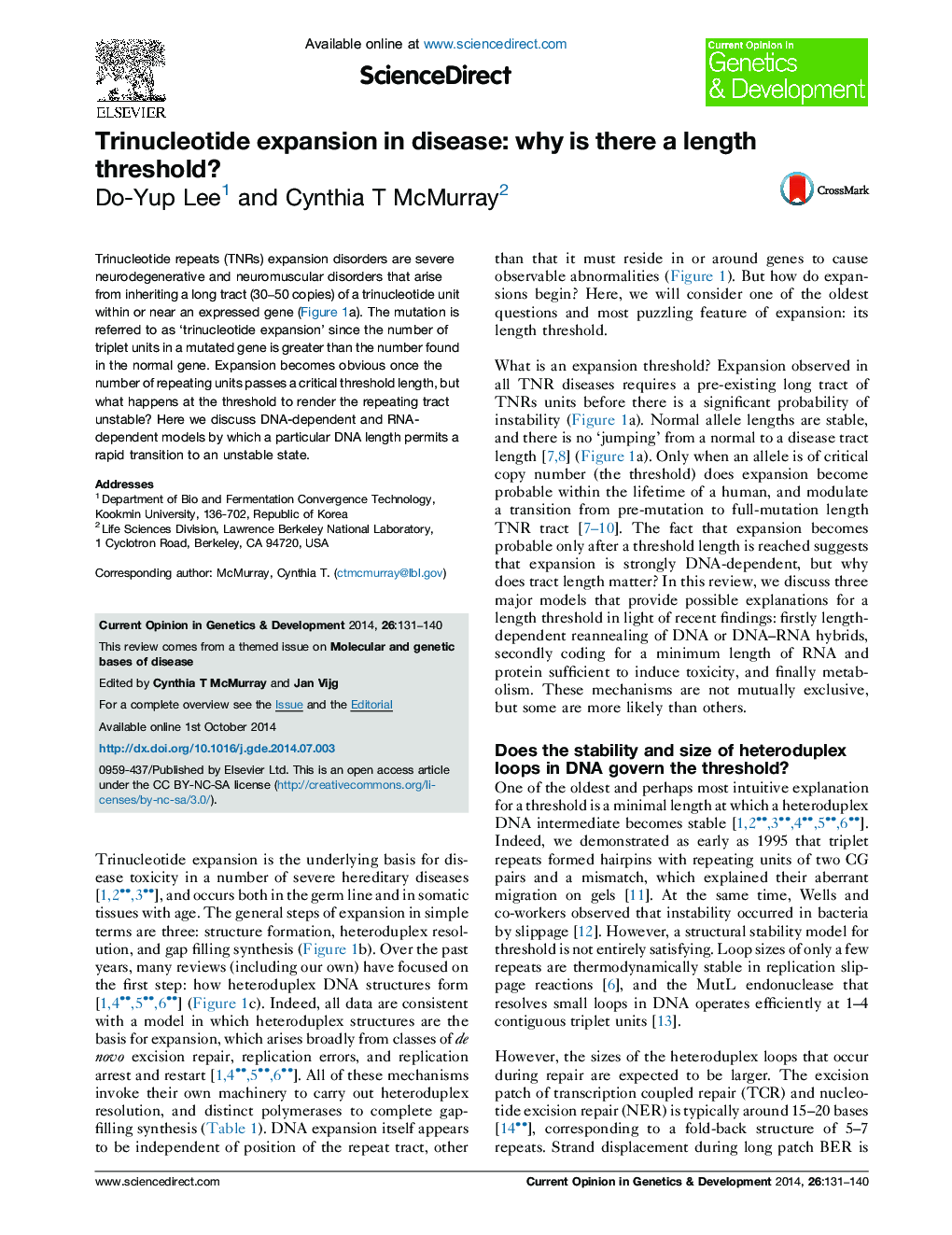| کد مقاله | کد نشریه | سال انتشار | مقاله انگلیسی | نسخه تمام متن |
|---|---|---|---|---|
| 5893371 | 1568253 | 2014 | 10 صفحه PDF | دانلود رایگان |
عنوان انگلیسی مقاله ISI
Trinucleotide expansion in disease: why is there a length threshold?
ترجمه فارسی عنوان
گسترش تری انوکلئوتید در بیماری: چرا آستانه طولی وجود دارد؟
دانلود مقاله + سفارش ترجمه
دانلود مقاله ISI انگلیسی
رایگان برای ایرانیان
موضوعات مرتبط
علوم زیستی و بیوفناوری
بیوشیمی، ژنتیک و زیست شناسی مولکولی
زیست شناسی تکاملی
چکیده انگلیسی
Trinucleotide repeats (TNRs) expansion disorders are severe neurodegenerative and neuromuscular disorders that arise from inheriting a long tract (30-50 copies) of a trinucleotide unit within or near an expressed gene (Figure 1a). The mutation is referred to as 'trinucleotide expansion' since the number of triplet units in a mutated gene is greater than the number found in the normal gene. Expansion becomes obvious once the number of repeating units passes a critical threshold length, but what happens at the threshold to render the repeating tract unstable? Here we discuss DNA-dependent and RNA-dependent models by which a particular DNA length permits a rapid transition to an unstable state.
ناشر
Database: Elsevier - ScienceDirect (ساینس دایرکت)
Journal: Current Opinion in Genetics & Development - Volume 26, June 2014, Pages 131-140
Journal: Current Opinion in Genetics & Development - Volume 26, June 2014, Pages 131-140
نویسندگان
Do-Yup Lee, Cynthia T. McMurray,
